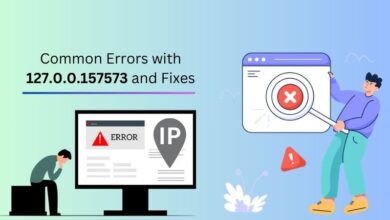10 .NET Development Trends You Need to Know In 2023

Technological development is booming, making it difficult to stay updated with the latest trends. The same is in the case of .Net trends. The entire infrastructure was custom-built for Microsoft. Moreover, .Net development is constantly evolving, and the Microsoft team has gathered a sizable .NET community that prioritizes .Net technologies. This technology is best for medium-sized and large-scale business applications.
Let’s look into some of the popular .Net trends of today to make your web development future-ready.
Top Ten .NET Trends Worth Tracking in 2023
Whether your company website is for Healthcare, eCommerce, Energy, Construction, EdTech, or any other sector, there is a need to learn about the most recent developments in .Net technology. Here are the top 10.Net trends for 2023.
Blazor Web Development
The .Net family of web development frameworks includes Blazor. It is usually a user-interface framework for .Net applications that use the same C# language as front-end development. Blazor uses C# rather than JavaScript to allow Web Assemble to run in the browser.
Additionally, its component-driven UI framework offers flexibility in using shared code for front-end and back-end development. As a result, it makes it possible for a .Net developer to develop comprehensive apps. Therefore, the Blazor framework increases the efficiency and sustainability of the .Net ecosystem.
The IoT & .NET Synergy
The need for remote access applications is growing as IoT networks in most businesses are used for security and automation. You can create applications for IoT hardware and sensors using the .NET framework. It also provides a unique Nano framework to develop apps for embedded devices. It is a new .NET trend intended to create machine learning applications leveraging the most recent developments in artificial intelligence and deep learning technologies from Microsoft Research.
Additionally, .NET offers libraries that let apps work with sensors, IoT input devices, System-on-Chip, GPIO, RFID components, I2C, and port interfaces.
You can also utilise it with a Raspberry Pi to control and manage all other connected devices. Moreover, with a secure communication channel, you can also define the data flow in an IoT network while ensuring the integrity of the data.
ML.NET
Microsoft has unveiled a new framework called ML.NET that enables the incorporation of machine learning features in .NET applications. Furthermore, it is open-source and readily accessible, allowing developers to adapt it to specific business requirements.
ML.Net does not require extensive adjustments to integrate into new or old apps. Also, it permits the use of pre-made artificial intelligence models the apps for sentiment, emotion, voice recognition, and detection. It has indeed emerged as one of the dominating .NET development trends for 2023.
.NET developers can easily create software that can predict growth, forecast sales, study client behavior, and identify fraud while retaining ML.NET’s speed, security, and quality. Stepping up, ML.NET allows you to include machine learning into your desktop, mobile, web, gaming, and IoT projects for more modernized versions of them.
.NET MAUI
A cross-platform framework called .NET Multi-platform App UI (.NET MAUI) allows developers to use C# and XAML and build native desktop and mobile apps in the shortest time. You can create apps with .NET MAUI that work with a single shared code-base and run on macOS, iOS, Android, and Windows.
With UI controls completely redesigned for performance and extensibility, .NET MAUI is an open-source version of Xamarin. Forms that extend mobile apps to desktop platforms. You can construct multi-platform apps with .NET MAUI using a single project. But you can also add resources and source code specific to a given platform if you need.
One of the main goals of .NET MAUI is to make it feasible for you to build as much of the app functionality and UI layout in a single code base as possible. It definitely is a game-changer for web solutions.
High-tech Security System
Any web application development form involves a close review of its security aspects. It is not just a result of the use of modules, like payment gateways and private data, but also data used during the development. The security of a web app with high-tech .Net security features has everything from security, support, and privacy to authenticated protection.
Also, you gain support for its MVC architecture to enable rapid app development. You can incorporate code access security, request validation, and put encryption into practice. It ensures data confidentiality, privacy protection, and frequent security update delivery.
.NET Framework 6
The .NET unifying process that started with .NET 5 has culminated in Microsoft.NET 6. The cross-platform .NET 6 unifies the SDK and runtime for desktop, mobile, online, and cloud applications by combining the .NET Core framework, and Xamarin/Mono technologies.
Also, .NET 6 offers a unified platform for applications of all shapes and sizes, making it easy to reuse code.
Microsoft’s official statement states that .NET 6 is an LTS release and will receive three years of maintenance. It is also compatible with several operating systems, such as Apple Silicon, Windows Arm64, and macOS.
Xamarin Development
Building cross-platform apps for iOS, Android, and Windows using a single C# /.NET codebase is possible with the help of the open-source Xamarin framework from Microsoft. It serves as the foundation of mobile applications of well-known organisations like Siemens, Bosch, Pinterest, Slack, and many more.
There are two methods for developers to create mobile applications with Xamarin. They can either use Xamarin. Forms or Xamarin.Native. The primary distinction between the two platforms is that Xamarin.Forms enable cross-platform UI code reuse while Xamarin.Native work with platform-specific APIs like Windows, iOS, and Android. Thus, revolutionizing the mobile app market.
Command-Line Interface (CLI)
A new cross-platform tool for building, running, and publishing .NET applications is the .NET Core command-line interface (CLI). For any web application, the .NET Core CLI command employs Out of Process hosting, i.e., it uses the Kestrel server to execute the app. CLI enables the creation, execution, and debugging of C# and VB projects
A tool for script-based automation of MS tools and technologies is the .NET Command-Line Interface (CLI). It offers cross-platform support for Integration Services, SQL Server Management Studio (SSMS), PowerShell, and Database Management Studio (DBMS).
MVC Architecture
Microsoft’s ASP.NET MVC web application framework uses the model-view-controller (MVC) design pattern. Except for the proprietary ASP.NET Web Forms component, the software is open-source.
As with Web Forms-based applications, the ASP.NET MVC framework integrates with pre-existing features like master pages and membership-based authentication. It is a compact, highly testable presentation framework. The System.Web.Mvc namespace contains the definition of the MVC framework as an integral and supported component of the System.Web namespace. This trend redefines the web app-building process.
Microsoft Azure Cloud
Microsoft’s most popular cloud platform is called Azure. It is a great place to host .NET apps and even create outstanding enterprise applications.
Microsoft created Azure to empower .NET professionals’ abilities to create ASP.NET websites, XML, and WCF web services.
Through its active directory services, Azure also enables identity and access management, facilitating the agile development of software. Its support optimises the scalability, security, and speed of .NET apps. This trend opens up the doors to multiple cloud solutions possibilities for businesses.
Conclusion
.Net is the fastest-growing language worldwide today. There is never a better moment to learn something from a tech blog right now! As an open-source framework, .NET simplifies the development of apps and services for the Windows, Linux, and macOS platforms.
It can integrate cutting-edge technologies like AI, machine learning capabilities, cloud services, IoT, and game engine optimisation and create native Android and iOS apps from a single codebase, among other things. Knowing and using the current trends of such a versatile framework will increase the potential of your upcoming web projects.
Read More Related This:
- Most Popular Programming Languages You Should Learn in 2023
- How can Dynamics 365 Intelligent Ensure the Resilience of the Supply Chain?





